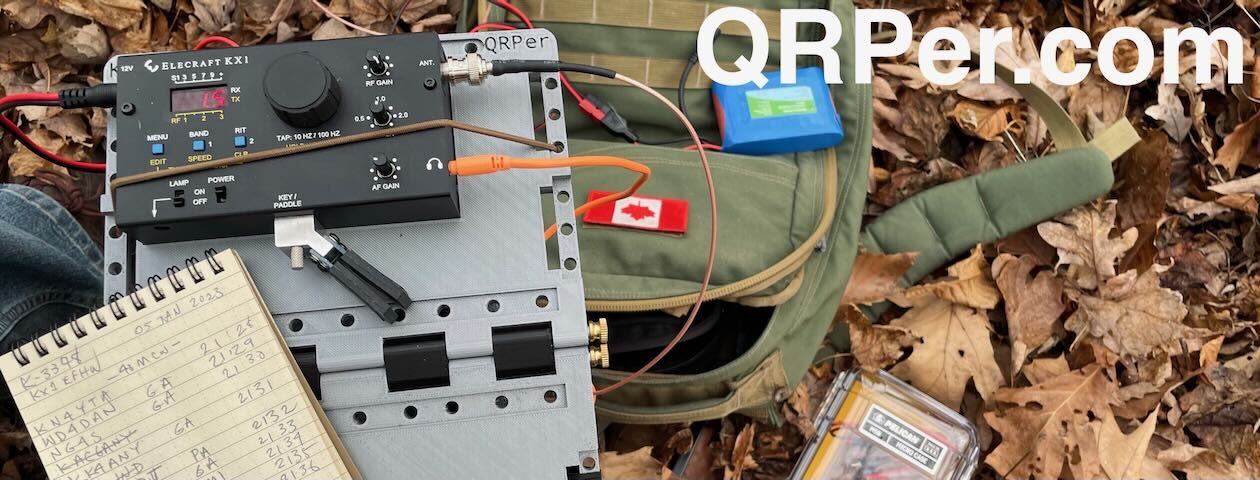My family decided to take a short pre-Christmas break on the coast of South Carolina in mid-December.
It had been a hectic month, so we looked at our healthy hotel points balance and decided to burn up a few of those on an impromptu four-night getaway.
We decided to stay at the same Myrtle Beach hotel where I stayed only a couple of months prior to attend a family funeral in Georgetown, SC. You might recall my activations at Lee State Park, Myrtle Beach State Park, and Huntington Beach State Park during that particular trip.
In truth, we’re not big fans of Myrtle Beach—we prefer more secluded, less commercial spots along the coastal Carolinas. In the summer, Myrtle Beach is jam-packed with visitors—the traffic is a little insane—but in the winter, Myrtle Beach is relatively quiet. Getting around is a breeze, and accommodation is easy to find.
This trip was all about family time, so I didn’t pre-plan a single activation, and I didn’t pack several radios. In fact, the only radio I brought was my Elecraft KH1, which lives in my everyday carry backpack.
The KH1 is a constant companion these days. It was really fun to take it on one of the balconies of our room and hunt parks and summits. Despite a little QRM, I was able to make a number of contacts just using the KH1 whip and dangling the counterpoise.
I remember working my friend Alan (W2AEW) while he was activating a park in New Jersey. I sent him the photo above. What fun!
Lewis Ocean Bay Heritage Preserve Wildlife Management Area (K-3903)
On Wednesday, December 20, 2023, we decided to spend part of the morning and afternoon in Conway, South Carolina, which is about a 30-minute drive from Myrtle Beach.
My wife asked, “Surely, there’s a park you can activate along the way?” (She and my daughters fully support my POTA addiction.)
After a quick glance at the POTA Map, I determined that indeed there was!
Lewis Ocean Bay Heritage Preserve WMA was essentially on the way to Conway, and I could tell based on a quick Google Map search that one of the access points (a huge gravel parking lot) was conveniently located next to the highway. Score!
I grabbed my backpack and camera (of course I brought along the camera just in case!). We drove 25 minutes to the access point which was easy to find.
As luck would have it, as I parked, I noticed that a motor grader was resurfacing part of the parking lot and the main WMA access road. This wouldn’t affect my activation, of course, but it was incredibly loud—especially the constant back-up alert.
So that my KH1 audio would be audible over the grader noise and the highway noise, I connected it to my Zoom H1N recorder.
Setup was quick despite setting up the audio feed and arranging the camera position under the shade the open hatch of my Subaru provided.
Gear
Note: All Amazon, CW Morse, ABR, Chelegance, eBay, and Radioddity links are affiliate links that support QRPer.com at no cost to you.
- Elecraft KH1 Edgewood Package which includes:
- KH1 Hand-Held, 5-Band Transceiver
- KHATU1 Antenna Tuner and Built-In Whip
- KHPD1 Keyer Paddle
- KHLOG1 Logbook Tray w/mini-ballpoint pen
- KXBT2 rechargeable Li-Ion battery
- KHIBC1 Internal Battery Charger
- ES20 Custom zippered carrying case.
- E980262 Power Cable
- KXUSB USB Cable
- Counterpoise wire & 2 storage clips
- E740377 KH1 Owner’s Manual
- Pelican Micro M40
- Camera: OSMO 4 camera with Sensyne Phone Tripod
- Zoom H1N Digital Recorder
On The Air
 I started calling CQ POTA on the 20 meter band and it didn’t take long before hunters started calling back. Continue reading Roadside POTA: Pedestrian Mobile with the Elecraft KH1 at Lewis Ocean Bay Heritage Preserve WMA
I started calling CQ POTA on the 20 meter band and it didn’t take long before hunters started calling back. Continue reading Roadside POTA: Pedestrian Mobile with the Elecraft KH1 at Lewis Ocean Bay Heritage Preserve WMA








































 These “No-Transformer” random wire antennas are designed to be paired with a good ATU–either external or internal. This type of antenna couldn’t be more simple.
These “No-Transformer” random wire antennas are designed to be paired with a good ATU–either external or internal. This type of antenna couldn’t be more simple.










































